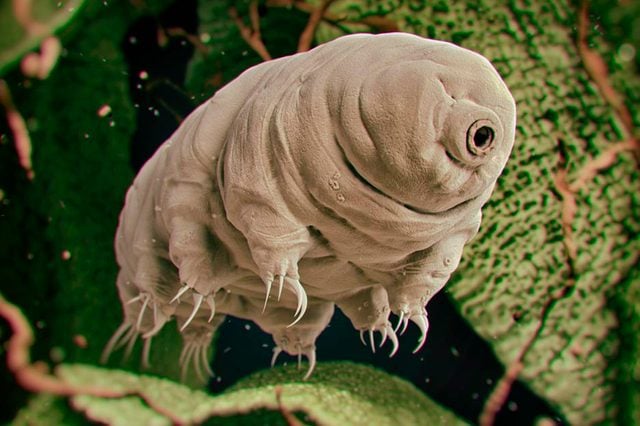Meet the Most Indestructible Species on the Planet
Updated: Nov. 25, 2022
Could these creatures outlast all other life on Earth?
 You’ve probably heard jokes about cockroaches surviving the apocalypse. Mythbusters tested it in one episode, and the post-apocalyptic Pixar flick Wall-E showed roaches as the only surviving living creatures on a wasteland Earth. (You’ll never guess what vegetable can keep cockroaches out of your kitchen.)
You’ve probably heard jokes about cockroaches surviving the apocalypse. Mythbusters tested it in one episode, and the post-apocalyptic Pixar flick Wall-E showed roaches as the only surviving living creatures on a wasteland Earth. (You’ll never guess what vegetable can keep cockroaches out of your kitchen.)
However, cockroaches are not the most resilient species on Earth. Far from it. There’s a microscopic creature that can survive 300-degree temperatures, up to 30 years without food or water, and even several days in space. Meet the tardigrade. (Even without this creature’s insane survival skills, you can take a tour of the International Space Station: thanks to Google Maps.)
Also known as a “water bear” or a “moss piglet,” these plump, waddling, eight-legged microorganisms are often found around mossy trees. However, they can be found in countless different environments: in the desert, on mountaintops, in rainforests. They live on all seven continents, too. Here are some wacky, creepy-crawly animal species you won’t believe are real.
When conditions become inhospitable, tardigrades undergo a sort of “pseudo-death.” They curl up in on themselves and enter a “stasis” that allows them to survive all sorts of crazy conditions: temperatures close to absolute zero; enough radiation to kill a herd of elephants; stronger pressures than the deepest oceans.
Because of this, an Oxford University study has found that tardigrades would likely be able to survive all sorts of outer space catastrophes. Catastrophes like asteroids and supernovas, that would wipe out humans and probably most other life forms on Earth. (Not that anything like that’s going to happen any time soon; it’s just scientists imagining the scenarios.) This means that, thanks to these gummy-looking oddities, it would be tough to wipe out all life on Earth. “Although nearby supernovae or large asteroid impacts would be catastrophic for people, tardigrades could be unaffected,” claims study co-author David Sloan. “Huge numbers of species…may become extinct, but life as a whole will go on.” As Jeff Goldblum summed up in the original Jurassic Park, “Life finds a way.” (Here are 10 of our other favorite movie one-liners.)
Tardigrades are so resistant to Earth’s most extreme conditions that some have speculated that they come from outer space. While firm scientific evidence shows that they did originate on Earth, scientists are searching for clues these creatures might provide about life on other planets. “Tardigrades are as close to indestructible as it gets on Earth, but it is possible that there are other resilient species…elsewhere in the universe,” says Rafael Alves Batista, another author of the study. “If tardigrades are Earth’s most resilient species, who knows what else is out there.”
